
The Spiritual side of the Field of Sacred Apples
B"H
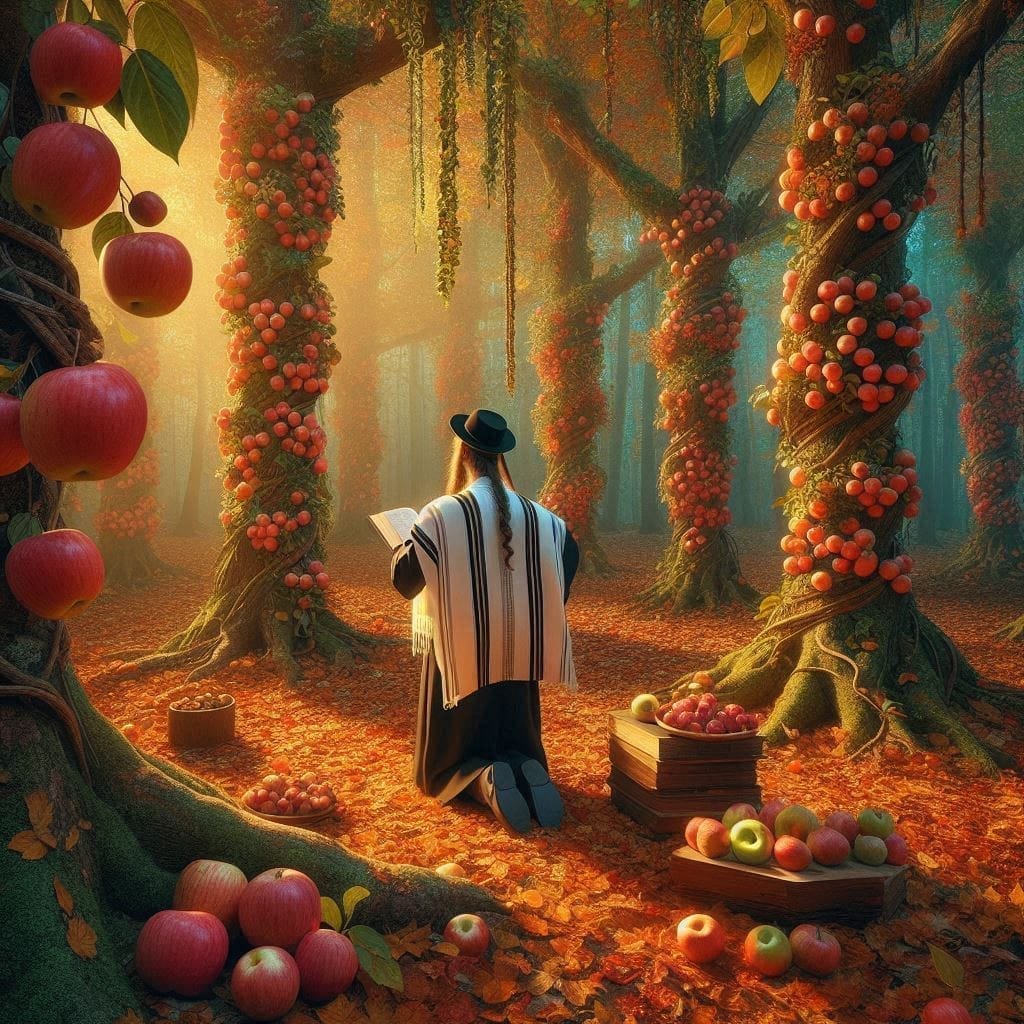
Introduction: A Season Rooted in Teshuvah
At Shtiebel on the Hill, our lives are measured not only in the turning of the seasons but in the turning of the soul. Here in Northern, among the rolling forests and Northern winds, the Jewish calendar is not a distant cycle—it is written in the trees, in the soil, in the fruit that ripens each summer and fall.
There is a certain season that speaks to us most deeply: the time of Teshuvah, repentance and return, which begins to stir during the Three Weeks of mourning, rises in the month of Elul, peaks in the Days of Awe, and finds its completion in the joy of Sukkot. This is the time when our orchard begins to bear fruit, and when our hearts, too, are called to ripen.
Our family has given a name to the orchard that stands on our property line: the Field of Sacred Apples. Six trees of our own, two shared with neighbors. They are ordinary apple trees, yet to us they are parables in bark and fruit. Their cycles of ripening mirror the stages of Teshuvah. Their sweetness embodies the sweetening of judgment. Their endurance in the cold reminds us of Hashem’s mercy that sustains even in exile.
This reflection—drawn from the land we live upon and the Torah we inherit—is offered as part of our family’s voice. It is a teaching born of the orchard, for the season we call the foothills of Elul.
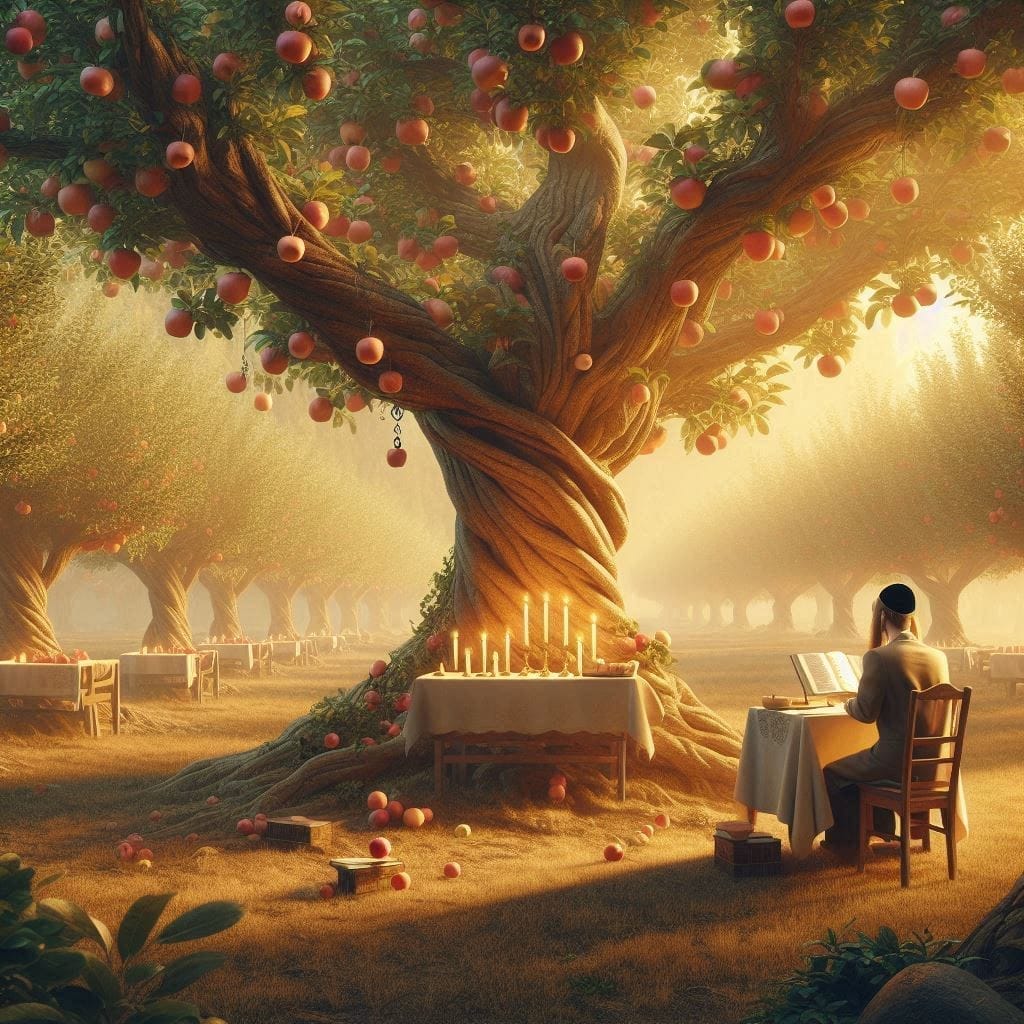
The Foothills of Elul: Beginning in Sorrow
Most people think of Teshuvah as beginning in Elul. The shofar is sounded, Selichot are said, and the heart awakens. But for us at Shtiebel on the Hill, the path begins earlier—at the 17th of Tammuz, the fast that marks the breach of Jerusalem’s walls.
From that day until Tish’a B’Av, we enter the Three Weeks, the season of national mourning. It is a time of brokenness, when we remember the destruction of the Temple, the scattering of our people, the long night of exile. It is heavy, but it is not without hope.
Here in North, these weeks coincide with the fullness of summer. The forest hums with green life. Yet in our orchard, something subtle begins to shift. The first apples begin to swell on the branches, though they are not yet ripe. They are promises—fruit not yet sweet, but on its way.
After Tish’a B’Av, when we have sat on the ground in mourning and recited Lamentations, the first apples begin to ripen. These are the summer apples, and their arrival is like the first glimmer of light after a night of tears. They remind us that even in destruction, Hashem plants seeds of renewal.
This is why we call the Three Weeks the foothills of Elul. Just as a hiker begins with the lower slopes before climbing the mountain, so our Teshuvah begins with mourning before it rises to awe. The summer apples that ripen after Tish’a B’Av are the taste of comfort that prepares us for the climb ahead.
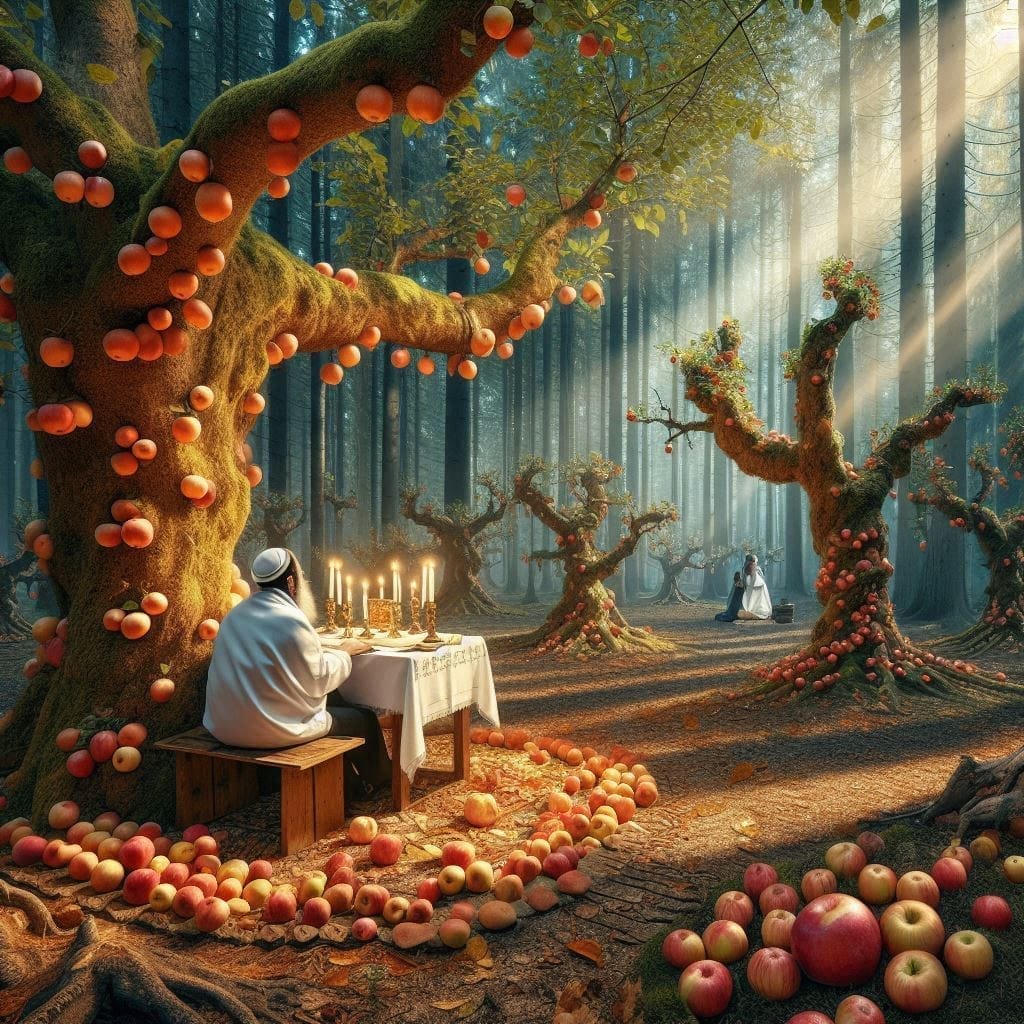
The Orchard as Parable
The orchard we call the Field of Sacred Apples is not large, but it is rich in meaning. Six trees belong to us, and two stand on the property line, shared with our neighbors. In this, too, there is a teaching: Teshuvah is never solitary. Just as apples grow in clusters and orchards span boundaries, so our repentance is interwoven with those around us.
Each tree ripens at its own time. One yields its summer apples soon after Tish’a B’Av. Several others ripen gradually through Elul and into the Days of Awe. And one rare tree—when it bears fruit—produces apples that ripen only after Sukkot, a true winter variety.
These trees are like souls. Some repent quickly, turning back to Hashem at the first call of the shofar. Others ripen slowly, needing time, prayer, and gentle sunlight to sweeten. And some are winter apples, whose Teshuvah comes only after the cycle of festivals has passed, yet who are no less precious in Hashem’s eyes.
The orchard thus becomes a mirror of our spiritual lives. It teaches us patience. It shows us that no one is beyond hope, no one is too late. Every apple ripens in its season; every heart has its appointed time.
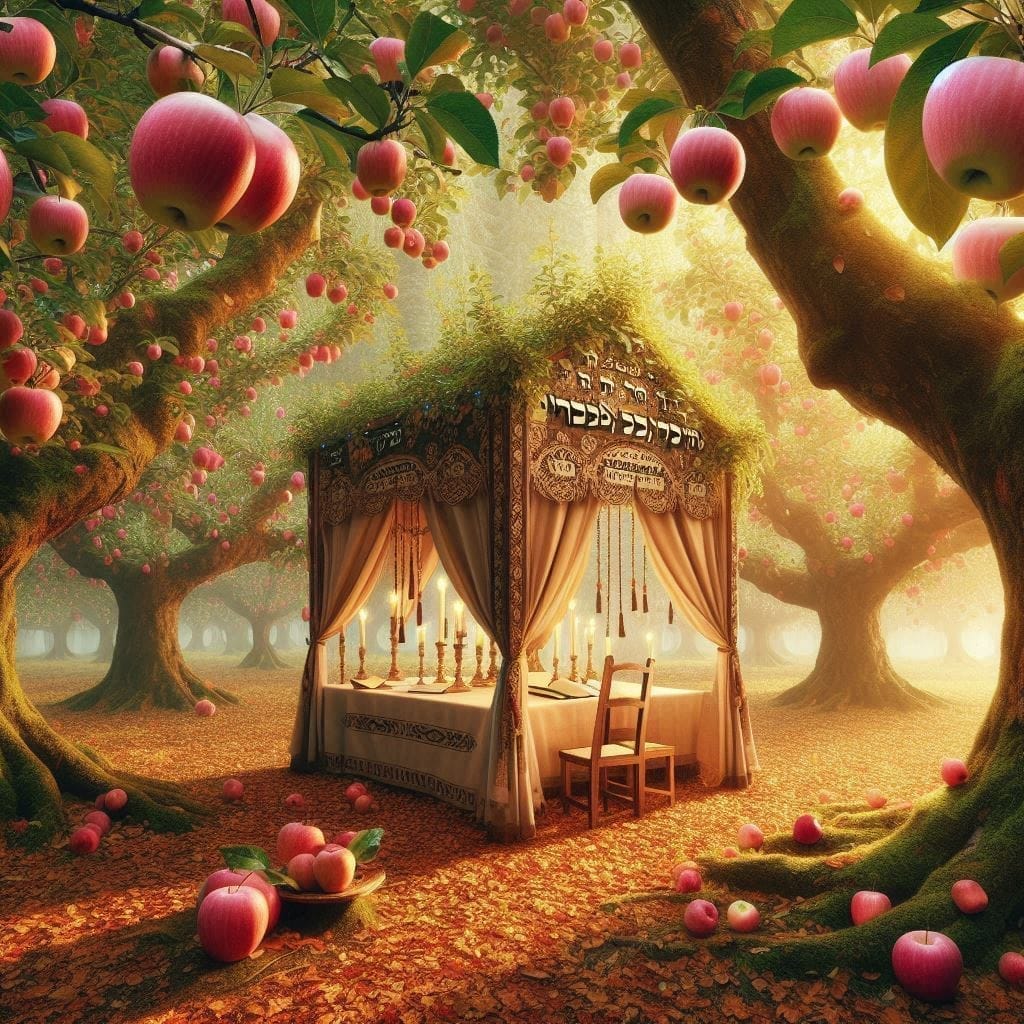
Apples in Torah and Kabbalah
Apples hold a special place in Jewish tradition. In Shir HaShirim (Song of Songs), the beloved is compared to an apple tree among the trees of the forest: “As the apple tree among the trees of the wood, so is my beloved among the sons.” The sages see in this a symbol of Israel’s love for Hashem, blossoming with fragrance and sweetness.
The Kabbalists spoke of the chakal tapuchin kadishin—the “field of sacred apples” in the heavenly realms. This is the dwelling place of the Shekhinah, the Divine Presence, radiant with joy and love. On Shabbat, we sing of this orchard, drawing its holiness into our prayers.
When I walk through my own orchard, I feel a reflection of that heavenly field. The apples on my trees remind me that Teshuvah is not only trembling before judgment but entering the embrace of love. The orchard above and the orchard below are bound together, just as heaven and earth meet in the act of return.
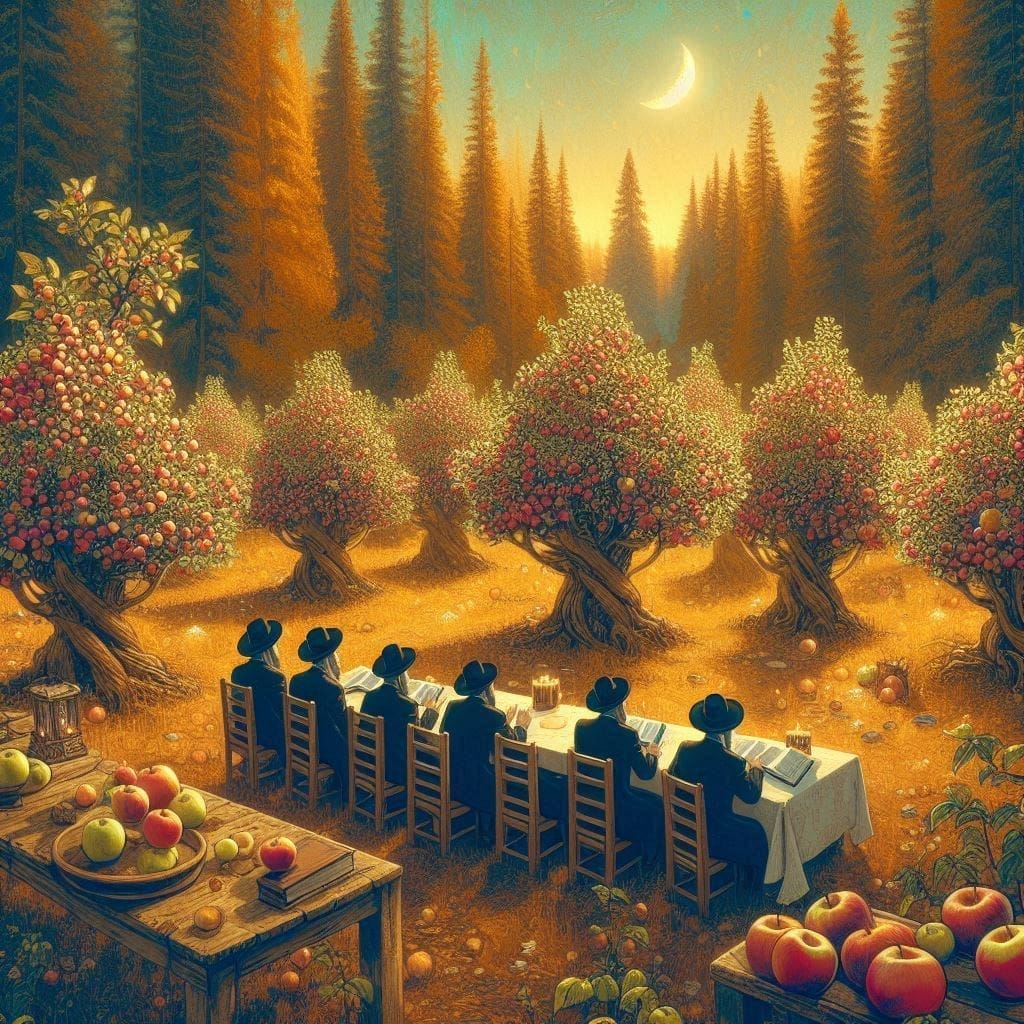
Sweetening Judgment
The Days of Awe are often spoken of in terms of fear. We stand before the Judge of all the earth. Our deeds are weighed. Our fate is written. Yet there is another side to this truth—one that the Sephardic tradition holds dearly.
For the Sephardim, Selichot are sung with melodies of joy. The judgment of Hashem is not terror but protection. It is the shield of a Father who loves His children. To be judged is to be cared for, to be guided, to be given life anew.
This is what the orchard teaches. The summer apples, ripening after Tish’a B’Av, are not bitter but sweet. They show us that judgment itself can be sweetened, that Teshuvah is not only about fear but about tasting Hashem’s mercy.
When we bite into an apple in this season, we are not only eating fruit. We are participating in a parable of the soul. We are reminding ourselves that every judgment can be transformed into compassion, every bitterness into sweetness.
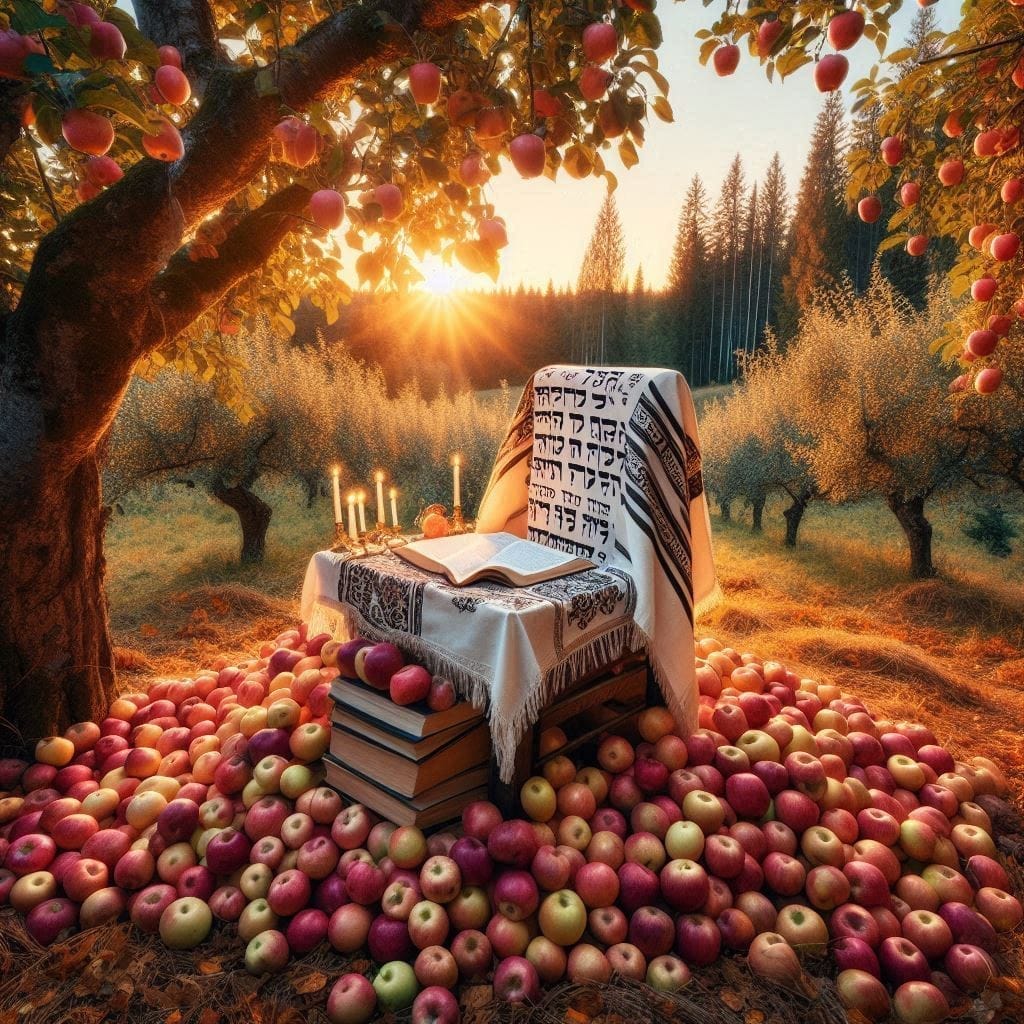
Elul: The King in the Field
When Elul arrives, the orchard enters its fullness. Apples hang heavy on the branches, as they the apple trees are prostrating (bowing) to HaShem during Elul. The days grow shorter, the nights cooler, the first hints of autumn in the air. This is the season of the shofar, sounded each morning to awaken the soul.
The sages taught that in Elul, “the King is in the field.” Hashem, who is often hidden in majesty, comes near to His people in intimacy. In Elul, we do not climb the mountain alone; the King walks among us.
For us at Shtiebel on the Hill, this teaching is literal. When I step into the Field of Sacred Apples, I feel Hashem’s nearness. The orchard becomes a palace without walls, where the King meets His children face to face.
The apples are like jewels in the crown of the season, reminding us that Teshuvah is not only duty but encounter.

The Days of Awe and the Winter Apple
As Rosh Hashanah arrives, the orchard is at its peak. The apples are gathered, shared, tasted with honey. We dip them and pray: Yehi ratzon milfanekha, shet’chadesh aleinu shanah tovah u-metukah—“May it be Your will, O Lord, that You renew for us a good and sweet year.”
On Yom Kippur, the orchard stands silent. The fast strips us of everything but the essence of life. Yet even in that silence, the apples on the branches are witnesses to mercy. They hang as tokens of sweetness waiting beyond the day of affliction.
Then comes Sukkot, the festival of joy. We build the sukkah, often with branches from the surrounding trees, sitting beneath the stars, eating the fruit of the land. And sometimes—when the winter apple tree bears fruit—its ripening comes only after Sukkot.
This tree is a mystery, a reminder that Teshuvah is never finished, that sweetness can emerge even after the festivals have passed.
The winter apple is a promise: even when the cold sets in, Hashem’s mercy endures. Even when we think the season is over, new sweetness can be found.
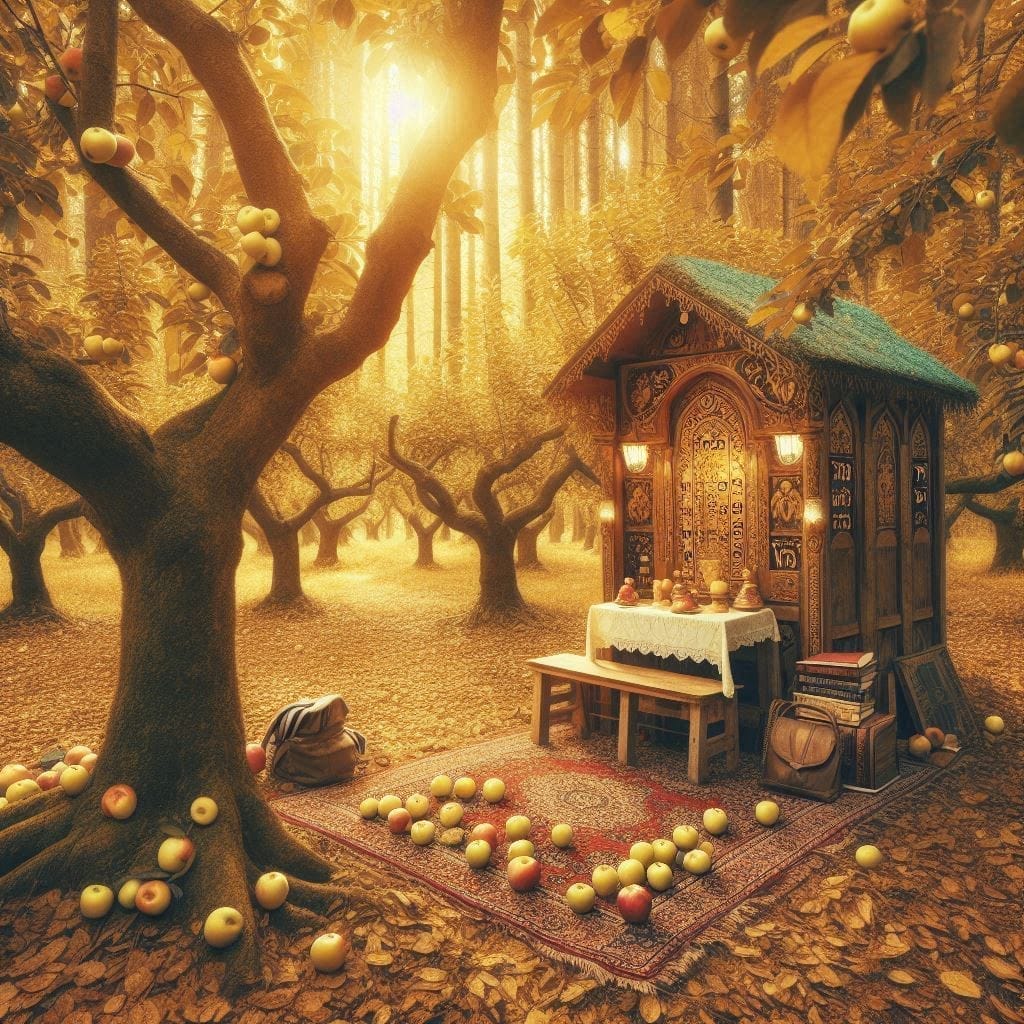
Shtiebel on the Hill’s Path
What does all this mean for us as a family? It means that our Jewish life is inseparable from the land we live on. The Field of Sacred Apples is not just a personal orchard but a symbol of what Shtiebel on the Hill seeks to be: a place where Torah and creation meet, where Teshuvah is lived in rhythm with the seasons.
Our custom, is rooted in this conviction. We adapt the wisdom of the sages to the realities of the North. We seek leniencies that make observance sustainable for rural Jews, yet we bind ourselves firmly to the halacha. We draw from the clarity of halacha and the fervent devotion of Hasidim, weaving reason and mysticism together in one fabric.
In this vision, the orchard is our teacher. It tells us that Teshuvah is not abstract philosophy but lived reality. It tells us that Hashem’s mercy is written in the cycles of nature. It tells us that our family, like the apples, must ripen in its season—sometimes quickly, sometimes slowly, but always in the end reaching sweetness.
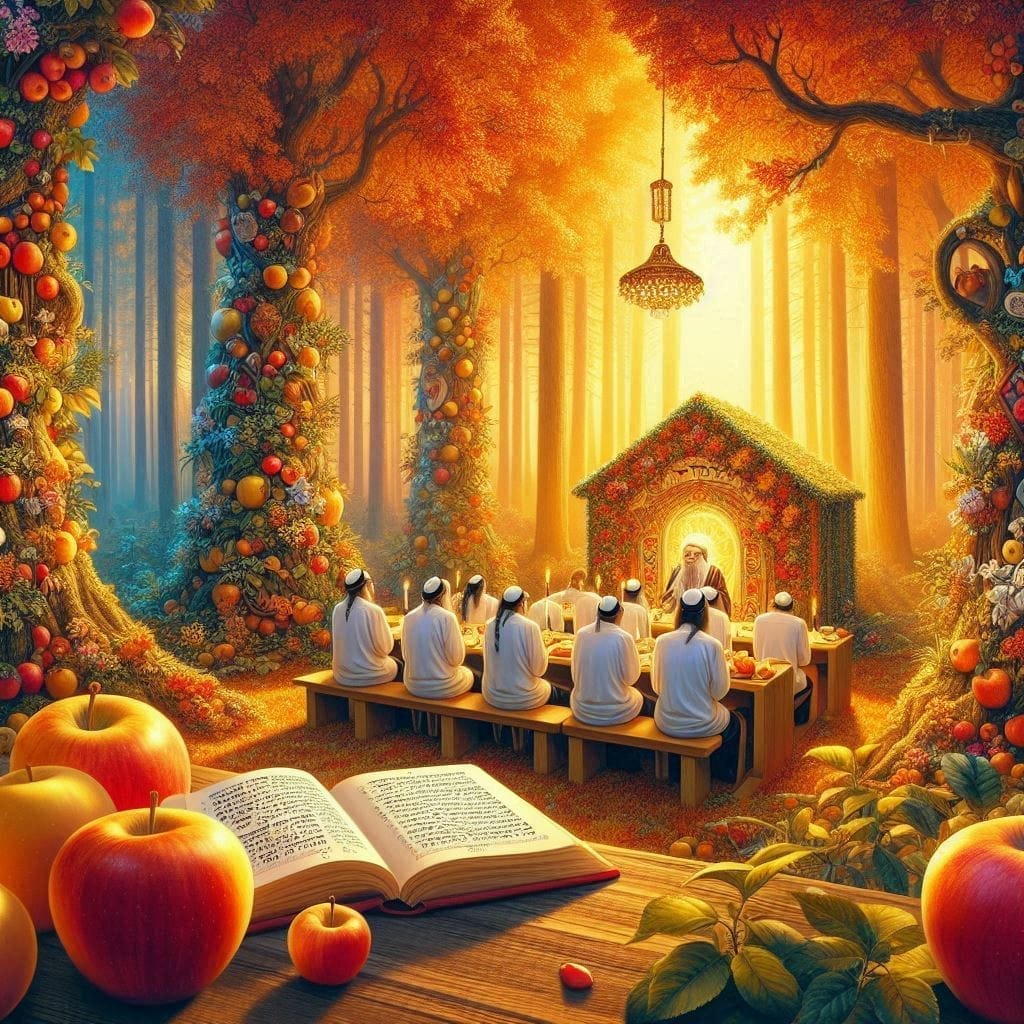
Conclusion: Entering the Orchard
As we journey from the 17th of Tammuz through Elul, Rosh Hashanah, Yom Kippur, and Sukkot, we walk through the orchard of Teshuvah. The Field of Sacred Apples stands as a living parable, teaching us to sweeten judgment, to ripen in mercy, to trust in Hashem’s timing.
At Shtiebel on the Hill, this is our way: to take the land we live upon, the trees that surround us, and let them speak Torah. To take the sorrow of exile and transform it into the sweetness of return. To walk through the foothills of Elul with faith, knowing that at the summit we will meet the King in the orchard.
And so, as the apples ripen, may our souls ripen. As the orchard sweetens, may our judgments be sweetened. And as the Field of Sacred Apples stands in North, may we stand with Israel in every land, awaiting the day when Teshuvah will blossom across the world and the orchard above and below will be one.
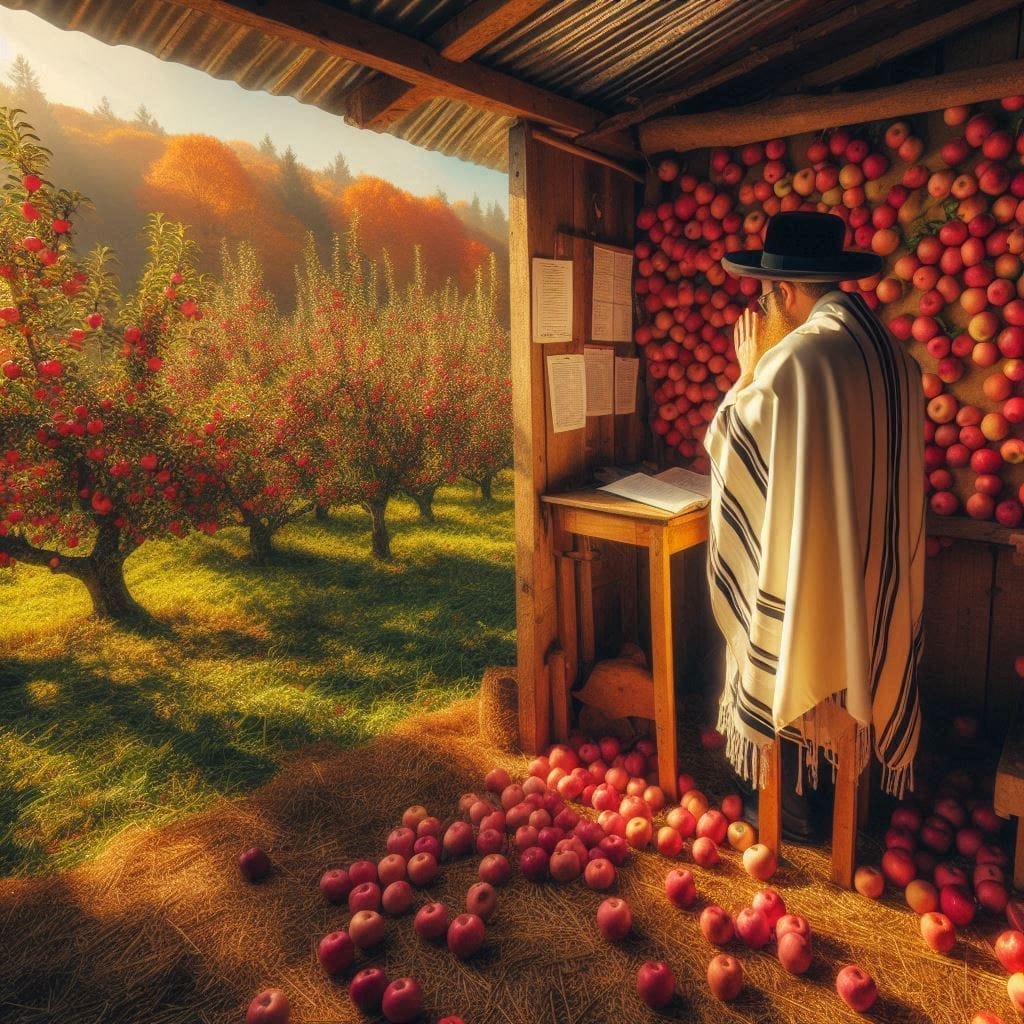
Subscribe now.
Sign up for our newsletter to get the most interesting stories of the day straight to your inbox before everyone else
Created with © systeme.io • Privacy policy • Terms of service


